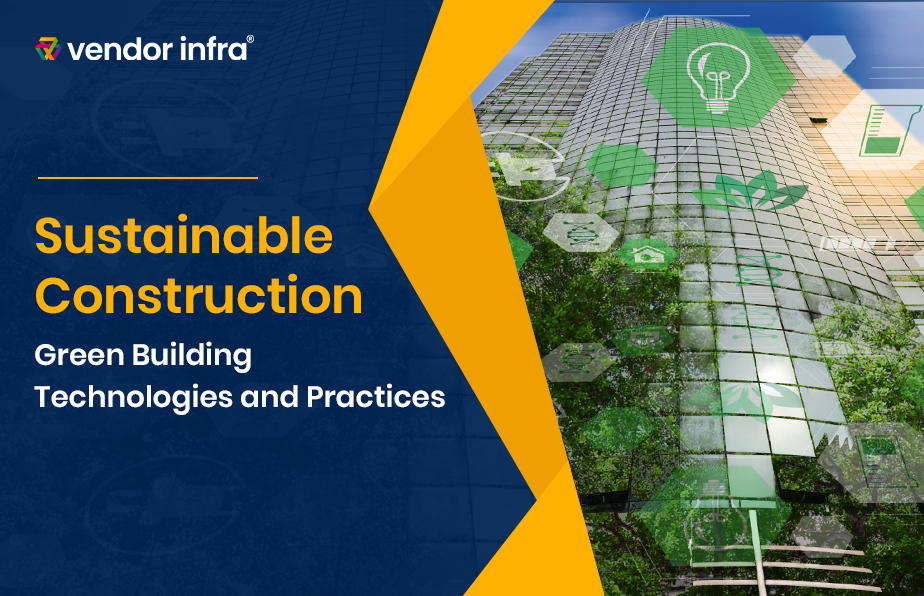Sustainable construction, often referred to as green building, is an approach to designing, constructing, and operating buildings that prioritize environmental and human well-being. In this article, we’ll explore the world of sustainable construction, delving into the technologies and practices that are shaping the future of the construction industry. We’ll break down complex ideas into simple terms so that everyone can understand the importance and impact of sustainable building practices.
What is Sustainable Construction?
Sustainable construction, at its core, is about creating buildings that have a minimal negative impact on the environment and a positive impact on the people who use them. Key principles of sustainable construction include:
- Energy Efficiency: Buildings designed to use less energy for heating, cooling, and lighting.
- Resource Efficiency: Using materials wisely and reducing waste.
- Indoor Air Quality: Ensuring healthy and comfortable living spaces.
- Environmental Responsibility: Minimizing pollution and protecting natural resources.
Green Building Technologies
Solar Panels and Renewable Energy: One of the most visible aspects of green buildings is the use of solar panels. Solar energy is harnessed from the sun to generate electricity. These panels are becoming more affordable and efficient, reducing a building’s reliance on fossil fuels.
High-Performance Insulation: Good insulation keeps buildings warm in winter and cool in summer. Modern insulation materials are highly effective, helping to reduce energy consumption and utility bills.
Smart Building Systems: These systems use technology to optimize building operations. They can adjust lighting, heating, and cooling based on occupancy, saving energy without sacrificing comfort.
Rainwater Harvesting: Collecting and using rainwater for non-potable purposes, like watering gardens or flushing toilets, can significantly reduce water consumption.
Sustainable Building Practices
Reuse and Recycling: Sustainable construction often involves using recycled materials and reusing existing structures. This reduces the demand for new resources and minimizes waste.
Efficient Design: Careful planning and design can reduce a building’s environmental footprint. Features like large windows for natural light and proper placement for optimal energy efficiency are crucial.
Green Roofs and Walls: Green roofs and walls are covered in vegetation, which provides insulation, absorbs rainwater, and creates green spaces in urban environments.
Benefits of Sustainable Construction
Savings on Utility Bills: One of the most immediate benefits of green buildings is reduced energy and water bills. Well-designed sustainable buildings can be more cost-effective in the long run.
Improved Indoor Air Quality: Green buildings prioritize indoor air quality through ventilation and the use of non-toxic materials, contributing to healthier living spaces.
Reduced Environmental Impact: By conserving resources and minimizing pollution, green buildings help protect the environment and combat climate change.
Enhanced Resale Value: Sustainable features can increase the resale value of a property, making it an attractive investment.
Challenges and Future Trends
Sustainable construction is not without its challenges, including higher upfront costs and resistance to change. However, as technology advances and awareness grows, green building practices are becoming more accessible and affordable. Future trends in sustainable construction include:
- Zero Net Energy Buildings: Buildings that produce as much energy as they consume.
- Circular Economy: A shift towards reusing and recycling materials throughout a building’s life cycle.
- Passive Design: Maximizing natural elements like sunlight and wind for energy efficiency.
Sustainable construction, with its focus on green building technologies and practices, offers a promising path to a more environmentally friendly and economically viable future. By prioritizing energy efficiency, resource conservation, and human well-being, we can create buildings that benefit us today and for generations to come. Embracing sustainable construction isn’t just a choice; it’s a necessity for a better tomorrow.


